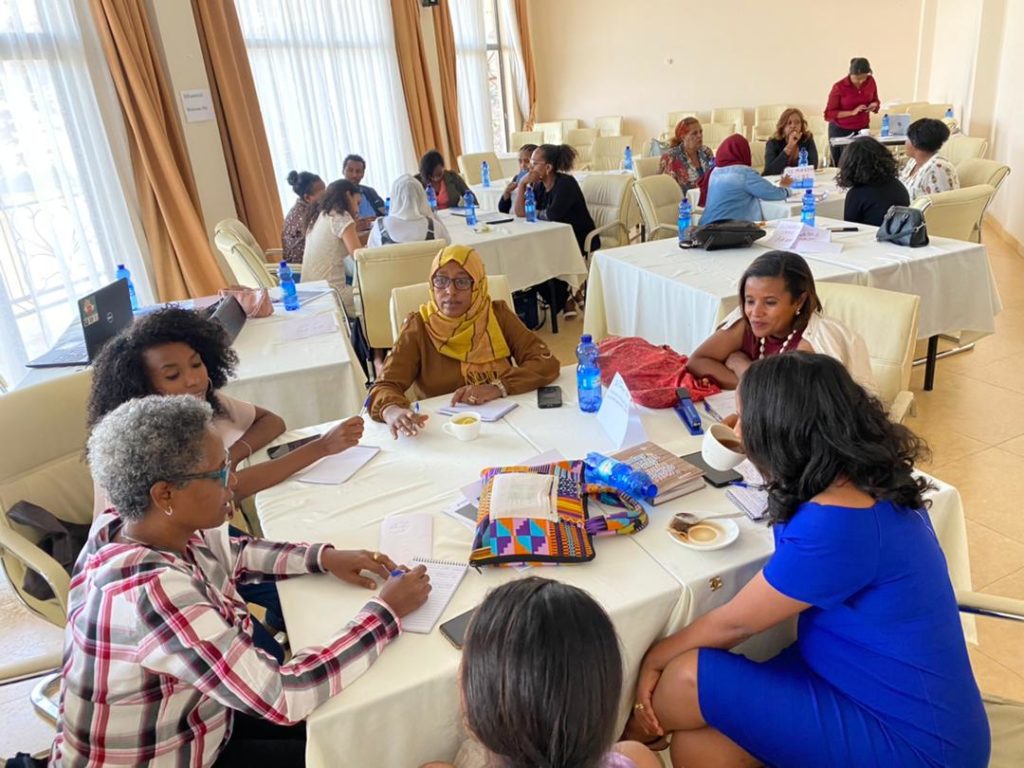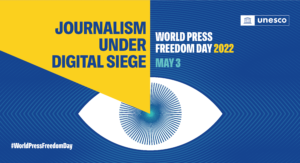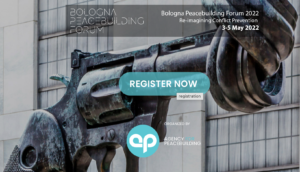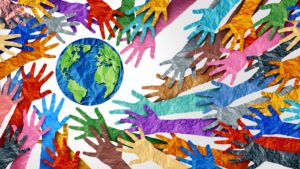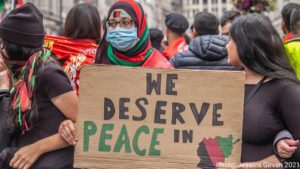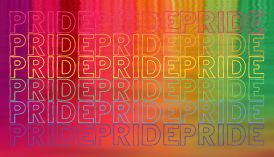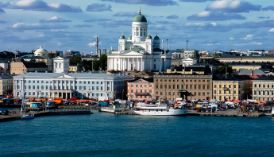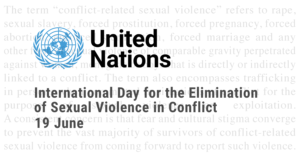We meet Tecla Namachanja, a renowned peacebuilder, specialised in transitional justice and social trauma healing. Drawing on decades of experience, she provides insights on supporting communities who have suffered violent conflict and human rights violations in Kenya through various mechanisms.
Tecla Namachanja Wanjala, is a globally recognised peace practitioner with over 30 years of experience. She specialises in matters related to Transitional Justice, Social Healing and Reconciliation. She is the former Chairperson of Kenya’s Truth Justice and Reconciliation Commission (TJRC), holds a PhD in Peace and Conflict Studies from Masinde Muliro University of Science and Technology, and is the Founder and Team Lead at Shalom Centre for Counselling and Development.
What inspired you to work on reconciliation and transitional justice?
I come from Bungoma, which is considered to be one of the marginalised regions in Kenya. So, when growing up and watching my mother and other women suffering, I wanted to…I joined social work, this developmental profession, because I wanted to support women in areas of livelihood, improving livelihoods. When I graduated from my colleague in 1991 and I searched for employment in my church, the Catholic diocese of Mombasa, where we were living then, instead of being sent to work with the women, I was sent to work with Somali refugees. If you remember in 1991 that is the time that Somalia disintegrated. So, I was sent in a refugee camp to support 30,000 Somali refugees and what the church did was to support supplementary nutrition for children under the age of five years and older people aged 60 and above. I also taught Kiswahili to the young students and pupils. The coastal areas being Swahili-speaking, we wanted the children and young people to communicate with the locals.
So in 1991 I worked in Utange refugee camp and in 1992 when Kenya experienced ethnic clashes, also known as land clashes, related to the general election, I was sent to work in internally displaced persons camps as a relief and rehabilitation coordinator. I supported 40,000 IDPs with relief food and medical care. I must say that while working with the refugees and IDPs, victims of ethnic clashes, that I experienced the injustices that communities in Africa and in my country experience. To start with the violent conflict was about land. The IDPs were evicted from their land because the people who consider themselves indigenous to where the IDPs were evicted from believed that the communities who settled there were favoured by the government settlement structures. This land was formerly annexed by the colonial regime, the so-called white islands, and so after independence, the communities felt an unfair process was used to resettle communities.
It was here that I experienced the impact of physical violence but also the impact of structural violence and that is the reason that when the Truth, Justice and Reconciliation Commission (TJRC) was set up to deal with transitional justice, I embraced it and applied to be a part of it. This is one area that encouraged me and another area that encouraged me was during the South Africa Truth and Reconciliation Commission when I was working under a national umbrella called the Peace and Development Network, I think there was an institution that facilitated peacebuilders from Africa to go and witness the truth-seeking process in South Africa. When I went there, I was encouraged, especially when I visited the communities, I saw how they were joining with the process, facilitating dialogue in the communities. At that time, I had no idea my own nation would set up a truth-seeking process.
Another area that encouraged me was when I went to university from 2000 to 2003 and that is where I took a Masters in conflict transformation and peacebuilding. I took a course in restorative justice by Howard Zehr. I really liked the concept of restorative justice, so when I came back to Kenya in 2003, this is the period that Kenya thought we were in a transition after dislodging a long dictatorial ruling party, Kanu, from leadership. Kanu had ruled Kenya from independence to 2003. It was only in 2003 that the coalition allowed for a multiparty form of politics and through competitive ways Kanu was dislodged from leadership. That is the time that we Kenyans thought we had reached a transitional moment and so as one of the strategies to deal with the past, the leadership commissioned a task-force to go around the country to find out if Kenyans preferred a truth and reconciliation commission as a way of dealing with its past. When I came back and I started to catch up and read the newspapers, I realised the discussions, the town hall discussions, were very heated. In fact at one point, they almost got violent.
So when Kenya set up a Truth and Reconciliation Commission, I thought that having worked with the communities and knowing that while at the community level the line between the victim and the perpetrator is so blurred and it keeps on changing, I wanted to be part of this transitional justice so that I can give my contribution to see how Kenya can impress restorative justice as part of the justice mechanisms when it comes to dealing with the past.
Why is transitional justice an important topic in Kenya?
Transitional Justice is a mechanism for a country emerging from a painful past, maybe caused by repressive regimes or a violent conflict. It is put in place to help that country deal with the past. And, in most cases, transitional justice mechanisms are put in place when the country believes that it has emerged from that past and it’s ready to move forward in a more democratic space. The mechanisms are put in place so that the country helps its citizens to put behind the pain of historical injustices and gross violations of human rights that its citizens have faced in a previous regime, so that they are in a more democratic environment that upholds human rights.
For Kenya, we acknowledge our painful past, right from the colonial regime and onwards in the subsequent regimes that took over power after independence. Kenyans continued to suffer from the regressive regimes, especially the one party regime and under the constitution that only allowed one party to contest for election. Among the injustices Kenyans faced were massacres, assassinations, torture, an unfair judicial and parliamentary system, police brutality and politically instigated violent conflicts.
When did the moment of reckoning come in Kenya?
For us, the moment of reckoning came during the 2007-2008 post electoral violence. Thanks to the mediation process, led by the late Kofi Annan and a team of eminent African leaders, who medicated and came up with a peace agreement that was signed. And so as part of the peace agreement they proposed for Kenya to look into its historical injustices and gross violation of human rights because during the 2007-2008 conflict, the way communities fought each other and the reason the conflict flared up was over a contested presidential election. The more we viciously went against each other, we realised the rage and the anger that we faced against each other was beyond surely a stolen election. It was at that moment we realised the historical injustices, the gross violations of human rights, the cycles of violence we have experienced since especially embracing the multiparty politics has left bitterness among Kenyans against each other.
Can you tell us about your role as Chairperson of the Truth, Justice and Reconciliation Commission?
One of the proposals was for Kenya to set up a Truth, Justice and Reconciliation Commission, where I was part of that process. The mandate of the Commission was to investigate historical injustices and gross violations of human rights that the country faced from independence in 1963 to 2008 in February when this peace agreement was signed by the principals of our coalition government. We invited these affected people who had experienced historical injustices and gross violations of human rights to come forward in a statement-taking process to state the violations they may have suffered. I remember we came up with around 40,000 statements from Kenyans who wanted to be a part of this process. Out of the 40,000 statements, we selected around 1000 of them and conducted hearings. What truth-seeking processes during the transitional justice do is to paint a global picture of the violations under investigation. So through the selected cases, we conducted hearings in almost every county. During these hearings, the survivors came forward and shared their painful stories with the rest of the Kenyans, and we invited the people that were adversely mentioned to also come forward to state their case and share their story.
I remember asking, because I was in charge of the Reconciliation Committee and at each hearing, whenever I attended, I asked the witness what she or he expected out of this process. Some really acknowledged the fact they were given a chance to share their painful stories. I remember a woman who suffered during one of the massacres that took place in Wajir. She was raped in the process. I think the massacre took place in 1984. We wanted to give her a chance to be a witness anonymously and she said no. She said: “I want the world to know what happened to me because whatever happened to me, happened in public.” And she stood there and shared everything she had suffered. And after she had shared, she said: “Now I can rest because I thought I was going to my grave with this pain.”
 Elders Circle meeting on preempting electoral violence held in Mt. Elgon, Bungoma County, Kenya. February 2022. Photo: Tecla Namachanja
Elders Circle meeting on preempting electoral violence held in Mt. Elgon, Bungoma County, Kenya. February 2022. Photo: Tecla Namachanja
And after the hearings, we came up with a report and for Kenyans this is a historical report because I know before the Truth Commission was set up, many investigations by human rights groups had taken place but the fact that the government set up this commission under an act of parliament was an acknowledgement that yes, we were coming from a painful past. It was an affirmation that yes, some of the segments of the population had suffered and we needed to confront our painful past in a space where we could talk to each other. We expected after that that reparative measures were going to be put in place.
Were your expectations met in terms of outcomes from the process?
Many people acknowledged that the process was very important. Many people acknowledged that for the first time they got to hear in public what the victims had suffered. Some communities acknowledged that they were not alone in their suffering, especially when they heard from other communities. The report we came with, we came up with recommendations and according to the mechanism that set up the truth commission and after completing the work, we were to hand over the report to the president, which we did. The president was expected to hand over the report to parliament, which he did. Parliament was expected to debate the findings and recommendations in the report, which they did not do…The report is stuck in parliament up to now. So this means most of the recommendations in this report have not been implemented.
I was also wondering why the report was stuck in parliament for a long time and I was bitter because at one point when the commission faced leadership challenges I took over the commission as an acting chair and steered the commission for about 18 years. I became the face of this commission. For a long time, I lived with a guilty conscience from promising so much to the survivors, having elevated their expectations. Before the TJRC, there were many reports that had been written by human rights groups with regards to the violations that Kenyans had suffered, but this was the first official institution sanctioned by the government.
In 2018, I was invited to be a research fellow and during this time I reflected on why nations set up truth seeking processes, yet when it comes to implementing the recommendations from these reports, it becomes a tall order. I did some research on how Germany is dealing with its past. I interviewed the chairman of the former Canadian Truth Commission. I interviewed a colleague from the South Africa Truth Commission and someone from Brazil. What I learned is when nations set up truth commissions, at times they face some challenges and one of the challenges is the moment of transition. I think when a nation is in total transition and leadership is completely changed, it becomes easy. Especially if the new leadership is one that comes with a decision to look into the country’s painful past.
But with governments of national unity, like the one embraced by Kenya,. I doubt that we were ready to face ourselves in the mirror and look at what happened. At one point, I thought this commission was imposed by the peace accord. I doubt that it evolved from within. Because as I say it was parliament to sanction the implementation of this report. Among the parliamentarians, when you look at the report, they were adversely mentioned by the survivors as among the people who perpetrated the historical injustices…When a country is not in total transition and we have leftovers from previous regimes in government, it becomes very hard for them to sanction the recommendations of the Reconciliation Commission. I think that is what we experienced in Kenya.
I think Kenya was the first commission that included the justice component. Ours was the Truth, Justice and Reconciliation Commission, and when you look at the objective first to promote peace, justice, national healing and reconciliation among the people of Kenya.
Because maybe where we are coming from in Africa, when we think about justice, in most cases it’s about retributive justice and that is where most of the leaning was when it comes to the recommendations. So the justice component really interfered with the implementation of this report, especially where we recommended further investigation leading to prosecution. I think South Africa did not have that. When you look at our mandate also, there was hardly any space for amnesty because it prohibited us recommending an amnesty for crimes against humanity, which was the majority of the crimes.
Why the report is stuck in parliament is that we have perpetrators still in leadership if it is not them themselves, it is their relatives or their networks and so the TJRC report is considered a hot potato.
What would you have done differently in the Commission?
There are various transitional justice mechanisms, truth-seeking is just one of them. When you look at the mandates of these truth commissions, there is a tendency to land everything in one basket which does not really help; recommending reparations, recommending further investigations leading to prosecution, recommending an amnesty even when the mandate does not allow. Looking at the structure from the national all the way to the community level, I think that is where the challenge is. I think it is good to separate these mechanisms.
For example, Kenya had a chance maybe to put up a hybrid court like what Sierra Leone did to deal with issues related to legal justice. Of course we had the ICC process but the ICC process only looked at the people who held the most responsibility for the violence that took place in Kenya. I think apart from the ICC, we should have had a hybrid court to deal with the perpetrators of gross violations of human rights or crimes against humanity. Then we should have left the truth-seeking process for what it is; to focus on the victims, the survivors – truth and reconciliation, truth healing and reconciliation. So that really this commission can facilitate healing and reconciliation among the people of Kenya. Because of our mandate of the legal justice component, the truth commission was sort of a monologue. It was just for victims to come and share their painful experiences. The adversely mentioned people hardly helped the victims because what they should have done was to acknowledge their role so the victims can forgive them and move on. But because of that legal justice component, the retributive justice component, those who come before the commission were there to deny their role in the injustices, pass the buck to the higher level…or justified their role in the perpetration of the injustices that took place.
What is ongoing in truth-seeking and reconciliation in Kenya?
Transitional justice is a journey and I think Kenya, with all the challenges…Kenya has been on the journey. It has set up reforms, starting with the constitution. In the new constitution, we no longer have one party, it is multiparty. There are clauses about integrity, even when it comes to holding public office. Nowadays, when you apply for any job in Kenya, the number of papers you have to produce, there are so many, from the anti-corruption body, a certificate of good conduct…You have to show you are a person of integrity before you can be interviewed for any top position in Kenya. Kenya has put in place the judiciary reform measures and this is part of the transitional justice; all judges, I don’t know if magistrates also, they have to go through the vetting process. Kenya has put in place police reforms to prevent police brutality. There is even a body to oversee this. Since the signing of the peace accord, Kenya is on the journey of transitional justice and it’s not a one-off activity but it is a continuation. I know some of the recommendations in the TJRC report are being implemented, For example, we have the Land Commission. I know some of the recommendations by the Truth Commission are being implemented by the Land Commission. Kenya has the National Commission of Human Rights, an independent body that continues protecting and observing human rights. Kenya has a National Cohesion and Integration Commission to foster national healing and reconciliation. So we have government institutions that were formed as part of transitional justice and they are continuing.
In 2019, when I came back from my year as a fellow in Berlin, I said I can continue mourning why the report is still stuck in parliament and not being implemented. Or I can, as a resource person in peacebuilding, trauma healing, transitional justice, pick up the low hanging fruits and start implementing some of the recommendations of the commission. I selected trauma healing. Truth commissions re-traumatise communities. In this report, to paint a global picture, we selected a community from Mount Elgon as a case to show the ethnic violence. In the recommendations, we came up with recommendations about memorialisation, setting up trauma-healing institutions and helping communities deal with their traumatic experiences from violent conflict. This is what I’m doing. Yes, Kenya is on the journey of transitional justice. I think civil society needs to come on board more to support this journey of dealing with the painful past.

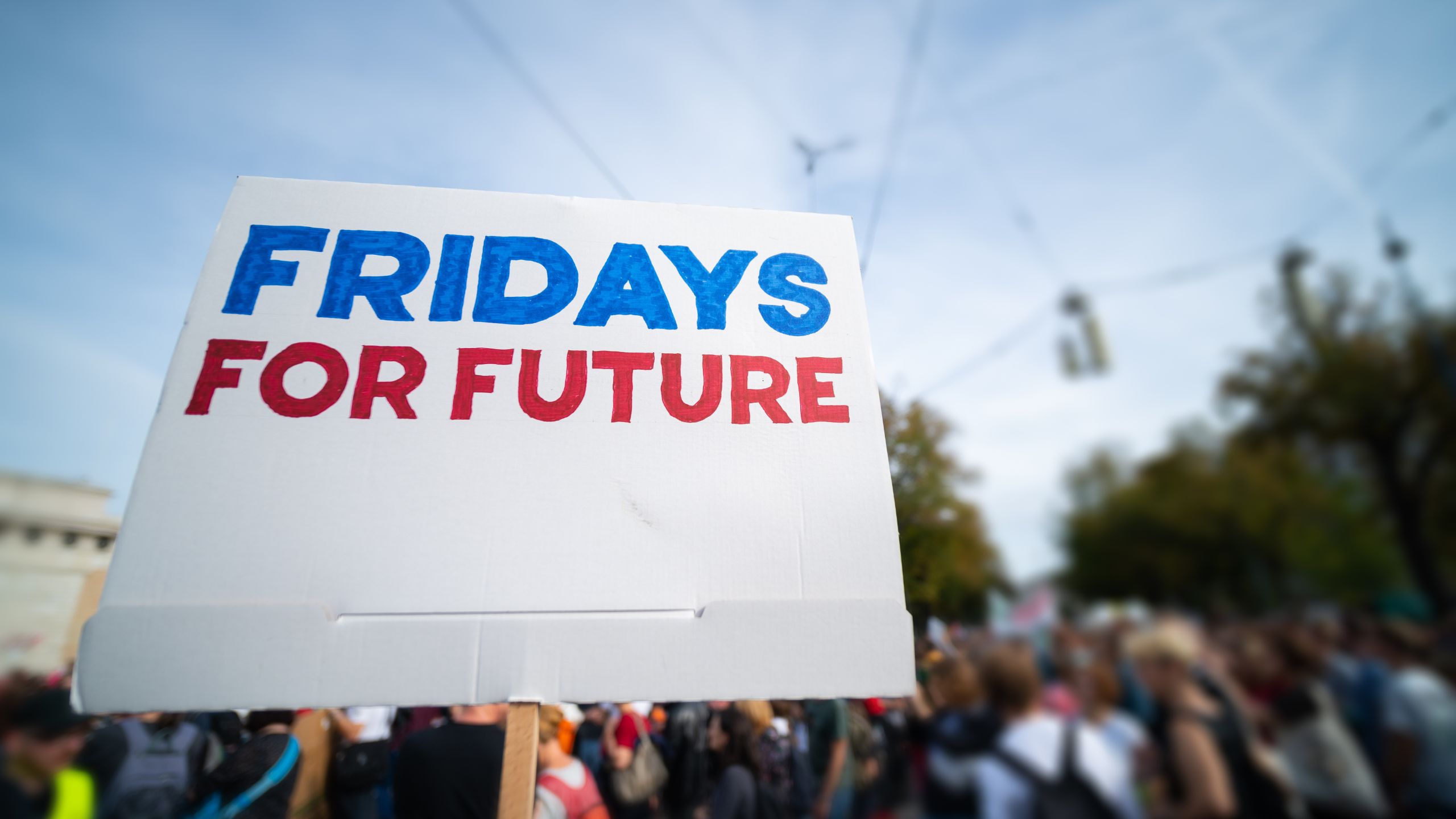
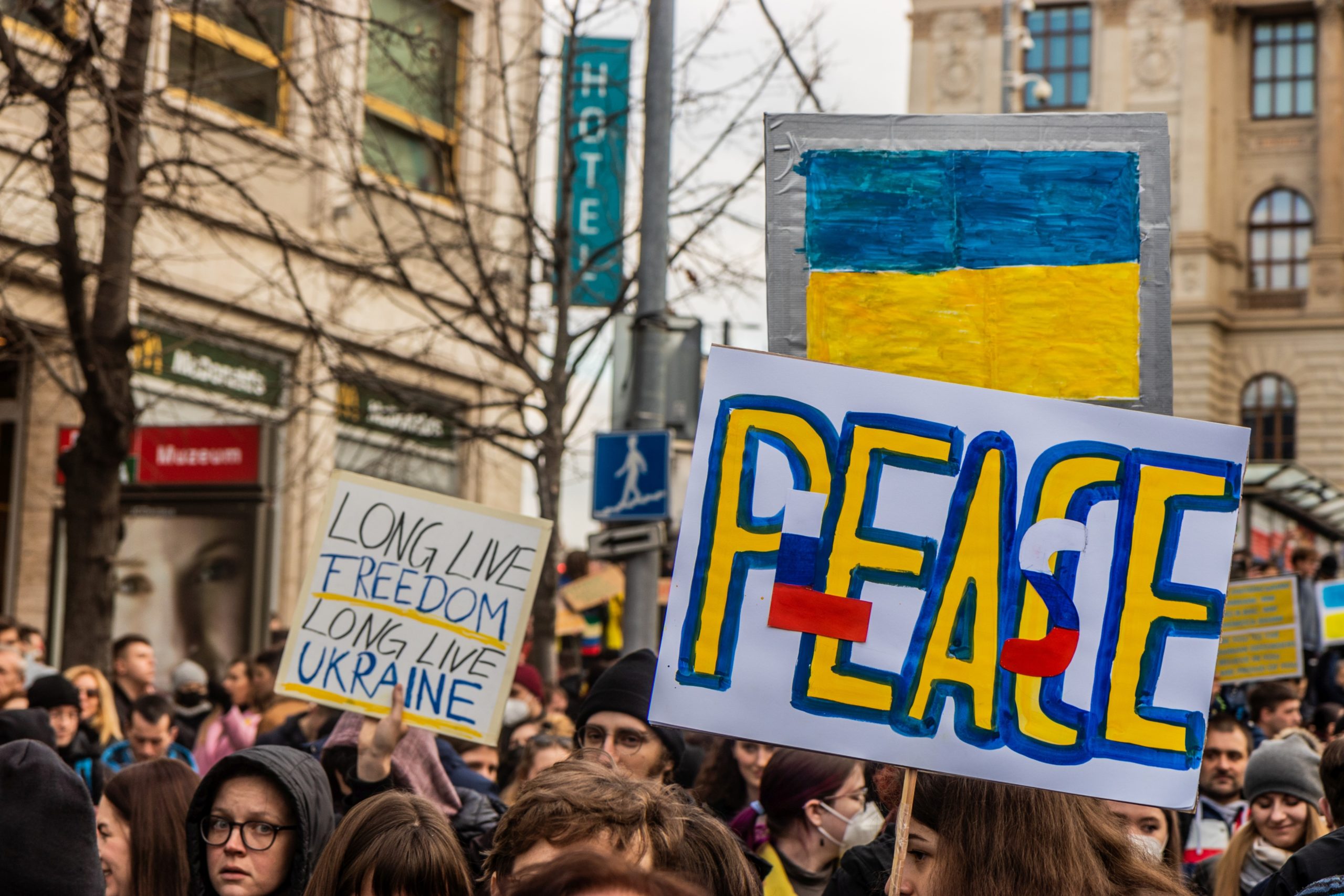
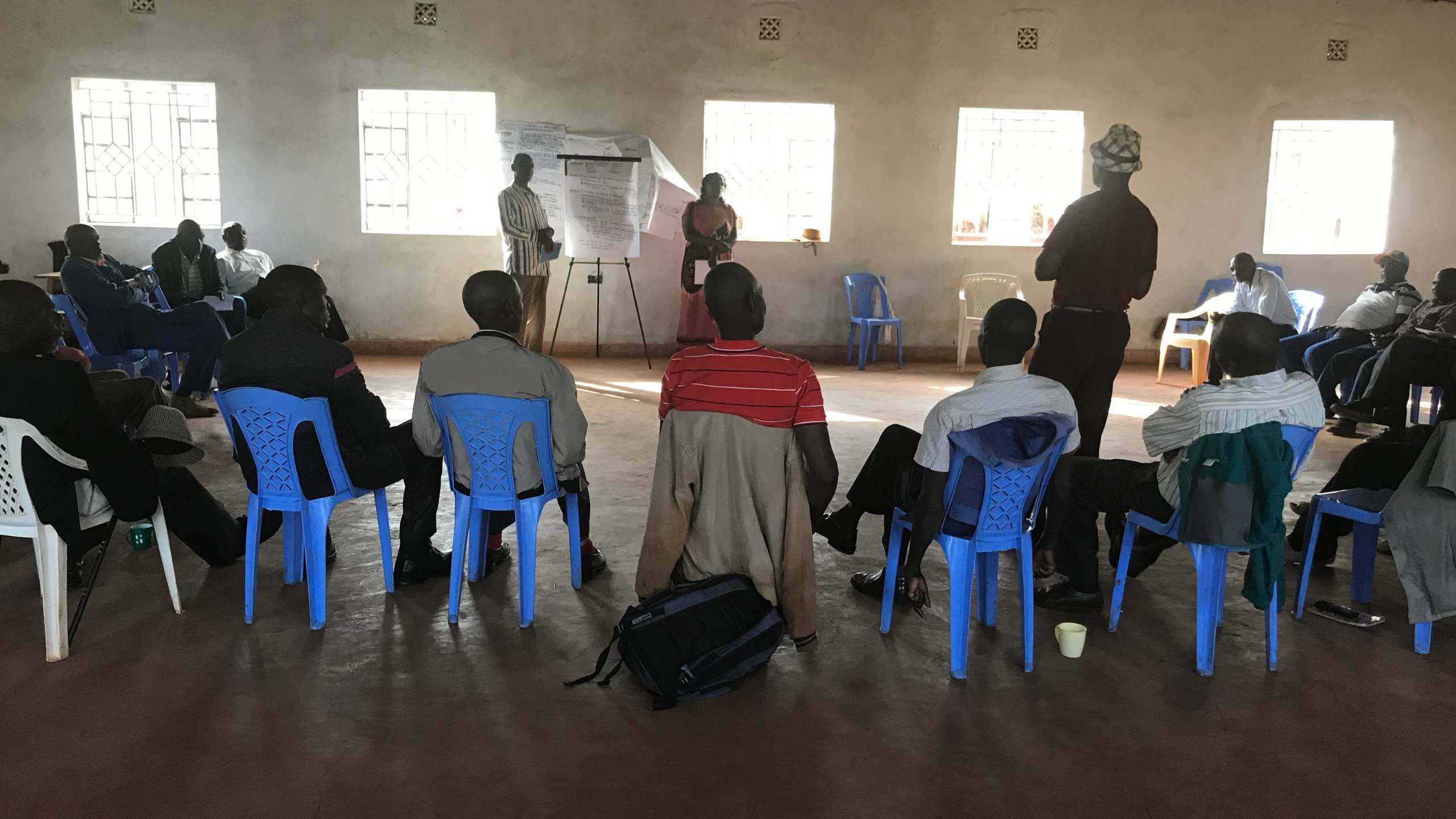 Elders Circle meeting on preempting electoral violence held in Mt. Elgon, Bungoma County, Kenya. February 2022. Photo: Tecla Namachanja
Elders Circle meeting on preempting electoral violence held in Mt. Elgon, Bungoma County, Kenya. February 2022. Photo: Tecla Namachanja 